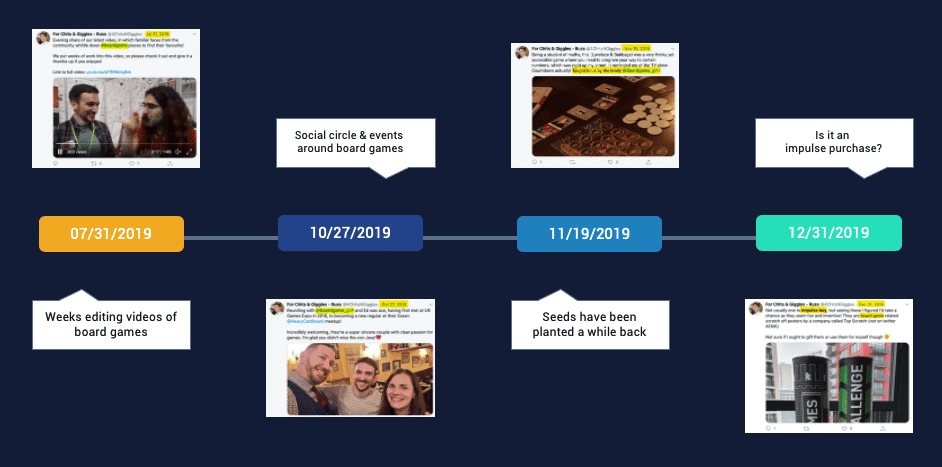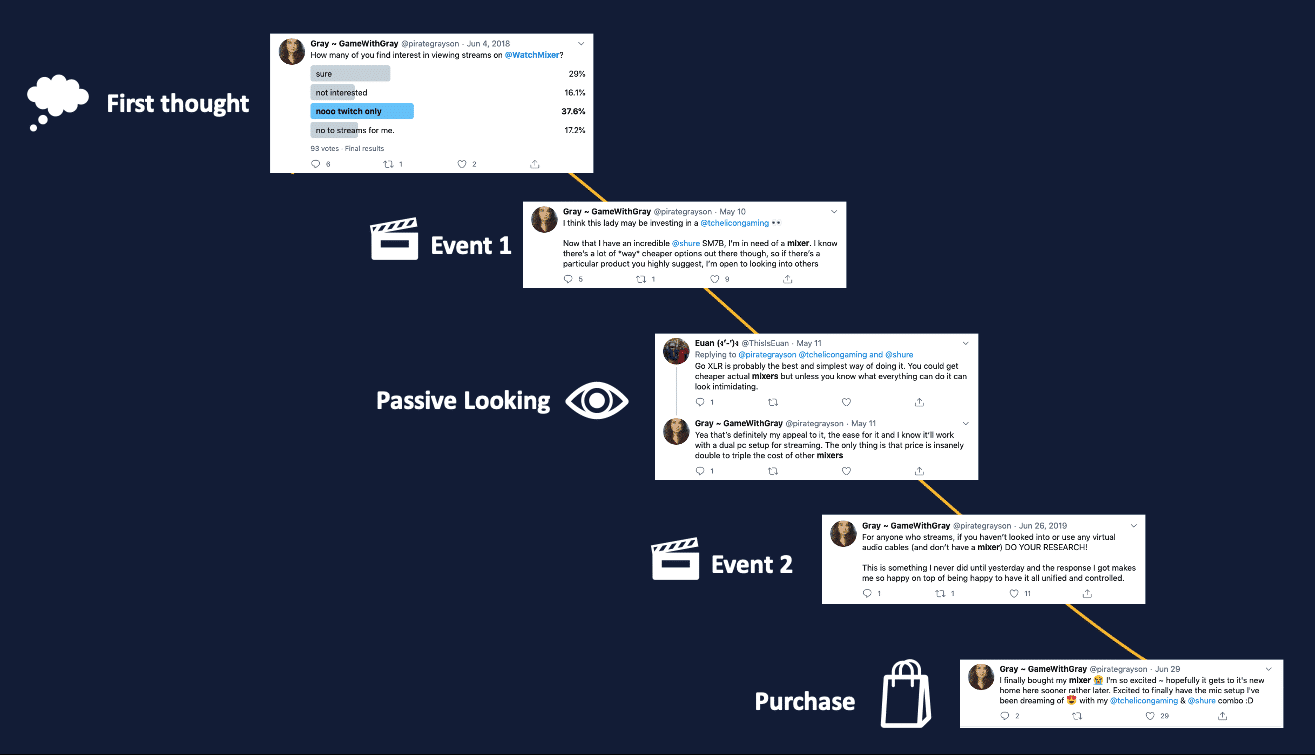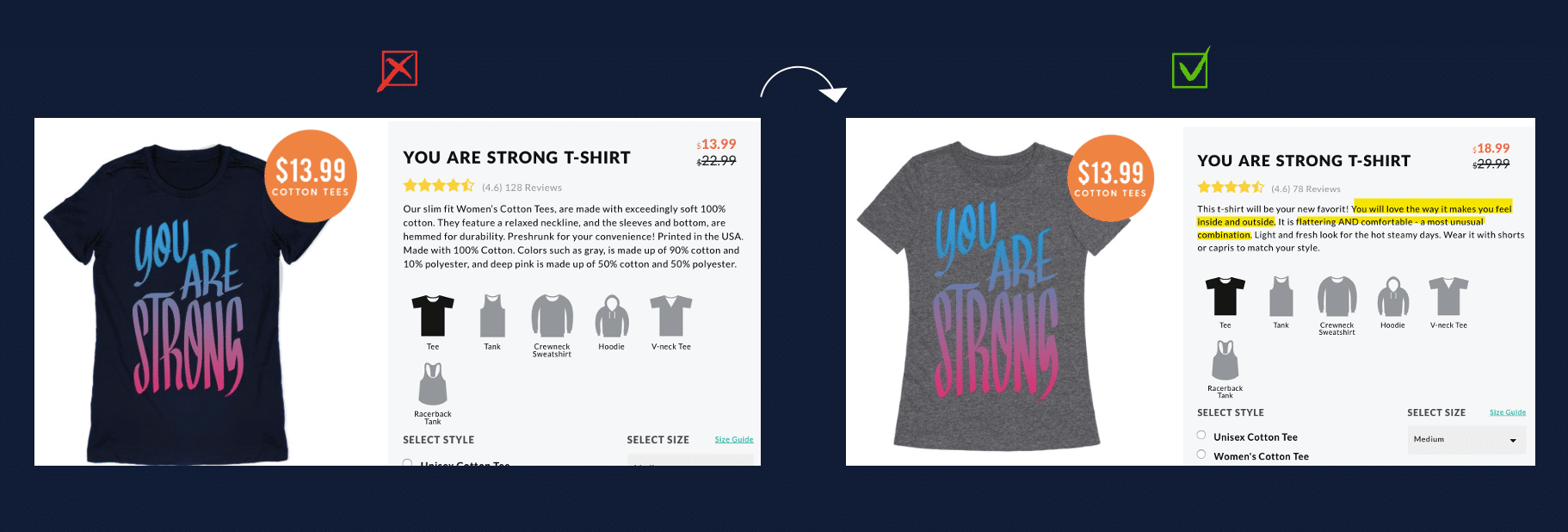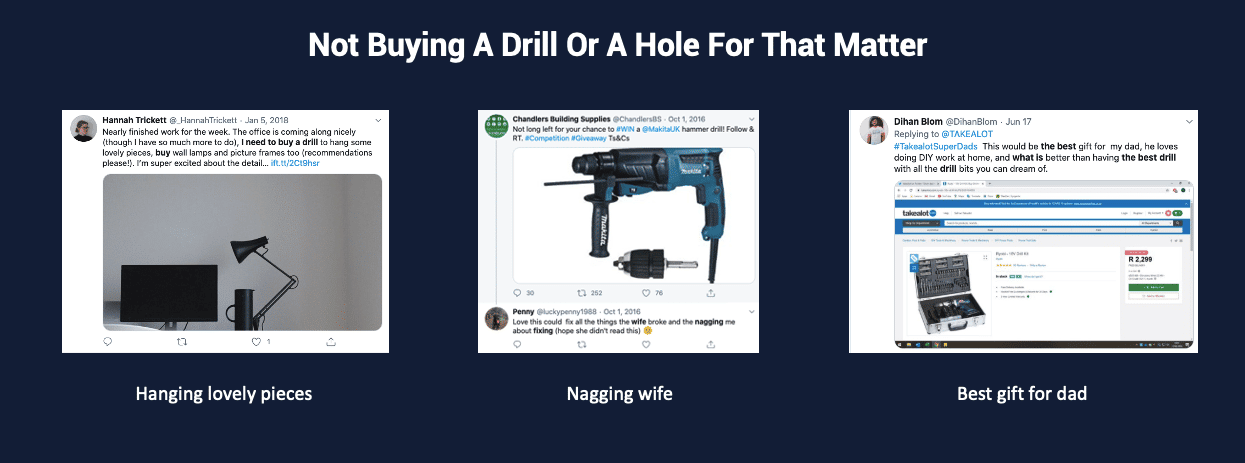There is no such thing as an impulse purchase.
Just because something is “inexpensive” doesn’t mean it’s an impulse decision.
Just because someone tends to purchase suddenly doesn’t mean they are making those decisions impulsively.
They’ve gone through a purchase journey – may be faster than others, but they have.
This customer thought that his purchase decision was on impulse – digging deeper, he was ready to make this decision more than anyone else.
After speaking to hundreds of customers, I’ve become well versed in understanding how to root out the causality that led to a purchase. It’s the first step in any marketing activity we conduct.
The customer starts by saying that the purchase happened on an impulse. They don’t recognize the deep exact reason behind their decision.
In reality, people go through several events that lead up to their decision.
Understanding the timeline is a gamechanger.
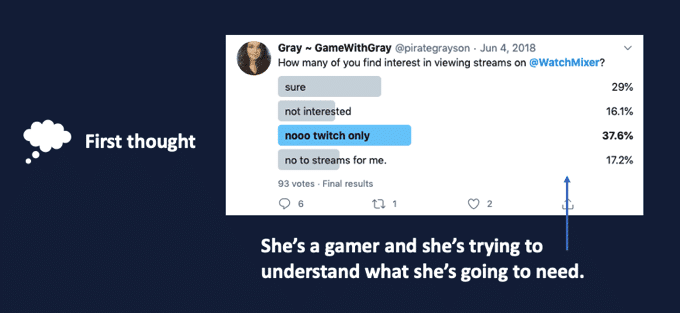
A first thought is when the customer gets the idea planted in their head that this product or service is something that they need or want.
Here’s an example of someone’s first thought back in 2018, figuring out how to become a better gamer and what is entailed.
Now, of course, a tweet tells you half the story, but you will see the progression.
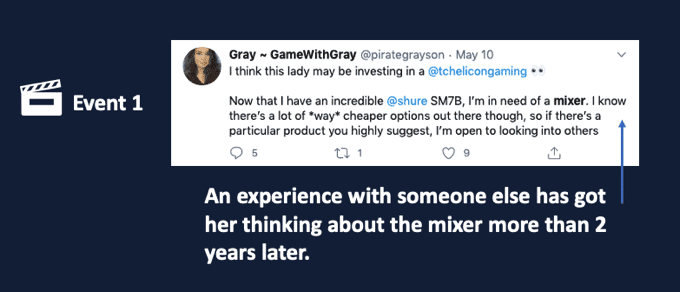
Event 1 references that first experience that clarifies that need or want even further. This customer referenced “the lady” and what she has been investing in.
She is further justifying making the purchase.
Events often are triggered by people doing or using that thing that has been in the back of your mind (the first thought).
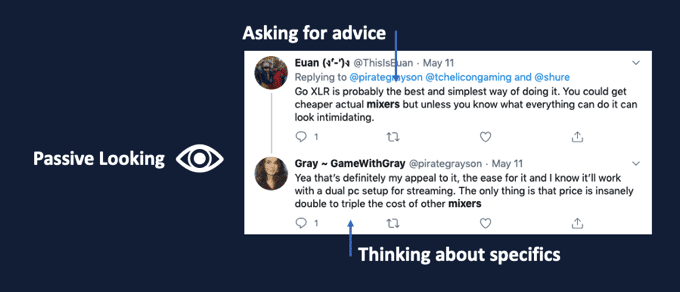
She starts to look – passively, meaning getting advice, seeing what people think, before she does the real work.
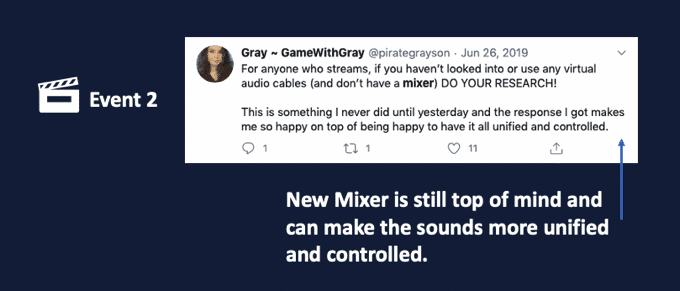
Event 2 is when that product or service need is crystallized in the customer’s mind – moving them to from passive to active looking.
So although the customer found this “new method” without the mixer to make the sounds more unified and controlled, she still has the mixer in mind.
Notice her use of the word “mixer” in bold. She knows this is the best way to achieve a better sound.
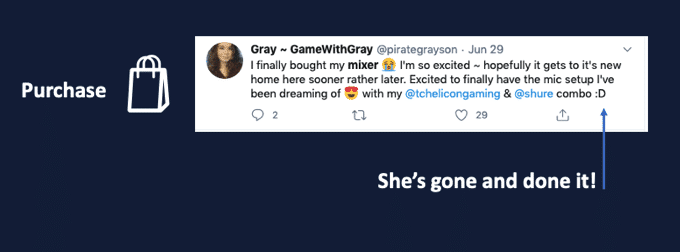
A few days later, after uncovering that “new method,” she bought the mixer to make things even better!
Here’s the full timeline view:
What do causality and these leading events have anything to do with conversion?
Just tell me Why
Customers don’t tell you “why” they bought a product.
Or they give you top of mind answers.
You can begin to understand the “why” through the tradeoffs customers make during their decision-making process.
Marketers say, well, ask the five whys: Why do you need this? Why? Why? Why? Why?
To get to that root cause and most likely emotional and social reason.
Toyota created this infamous 5 Why’s method. The theory is by asking why, then why, and so on, you can get to the root cause and reason.
But it’s annoying to keep asking WHY?
And asking why, many times, gets you top of mind answers.
How do people make decisions?
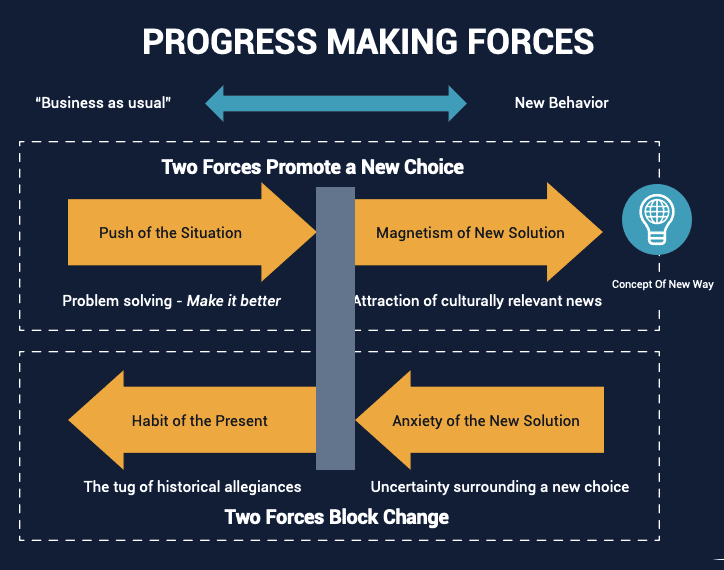
Image credit: Rewired Group
Our good friend Bob Moesta of the Rewired Group does Jobs to Be Done for a living. He introduced us to the concept in the first place.
The company finds new ways to innovate and solve complex problems through these types of interviews.
One of the projects he worked on was as a VP of marketing for a construction company.
His goal was to attract more people to purchase the condos they offered.
The people they were targeting with the new development had several “Pushes:”
- They needed to downsizing.
- They wouldn’t have to worry about gutters and what not.
- They would have a cleaner home since it’s smaller and easier to maintain
- They were typically Empty nesters.
The magnetism of the new solution: It was a 1500 ranch condo brand new construction – 2.5 baths two bedrooms. The condos were gorgeous.
If you would see these condos, you’d want to move.
But They weren’t selling.
What was the problem?
So they started interviewing, and they understood the anxieties :
- How are we going to move?
- How are we going to pack?
- How are we going to sell?
Don’t forget about the habit of the present:
- This is the place they raised their family in
- This is the family heritage/heirloom.
- This is the neighborhood they’ve been in for 20+ years.
Push and magnetism need to be stronger than Habit and Anxieties for people to make progress and change.
And again, very often, there are those events that happen in people’s lives that push them further.
Well, when they interviewed some of the couples that did move, they understood that a driving factor for them was that “so and so” died, and the move was that much harder for the spouse that was left.
The first thing Bob did after hearing this piece of information was put the ad for the condos near the obituaries section in the newspaper. He understood that the magnetism of the solution would be that much stronger.
Thinking of buying a new car
You see hundreds of car ads, but you never really notice them until you’re looking for a car.
What goes into the decision making process of buying a new car?
- Your car is old and is breaking down, or maybe your friend is driving a new car, and you feel a social pressure to match him. That’s the push of the situation.
- The new car has impressive specs. That is the magnetism of the new solution.
- But you have so many memories in your old car, and it’s always been there for you – that’s the habit of the present.
- Do I really need to commit to a monthly payment? What is the best car for me? Should I lease, rent, or buy? That’s the anxiety of the new solution.
Now, if that same person was driving, and suddenly the car broke down – that event, it could be a trigger to push them closer to making the decision.
Or, for example, that person went to a friend’s home and noticed that their friend had indeed bought the same car they were considering. Again, it would be an event that would push them further.
Understanding the progress making factors will help you become a better copywriter.
A better marketer.
A better salesman.
The example below is an example of two car ads, one that highlights the specs: meh.
And the other that is talking and displaying class and those emotional reasons that may impact a person’s decision.
Causality is Social and Emotional
“Customer insights can ripple across an organization and be interpreted differently by different parties. That’s why understanding the context and circumstance that leads to JTBD research is so important.”
Customers are triggered by various events that will result in the purchase. They do not recognize these triggers and events until they are interviewed.
Causality is almost always emotional or social.
When a woman was asked why she purchased a shirt with the words “You are Strong” on it, she first said it was an impulse purchase.
By digging a bit further, the interviewer was able to figure out:
She had just given birth…
She had been feeling overwhelmed…
And she was balancing too many things.
The shirt was a homage to all that she had been through.
Copy that caters to the emotions wins:
Prof. Ted Lovett famously said:
“People don’t want to buy a quarter-inch drill; they want a quarter-inch hole.”
When you look for a drill, for example – companies are generally competing over specs and ignoring that emotional and social reason. Specs aren’t the root reason for someone to make the purchase.
Companies are competing over the color of a drill, the power, the specs – rather than the emotional: “hanging up that beautiful family picture.”
You can ask a customer why they bought the drill, and they may rattle the specs. That’s top of mind answer.
The better approach is to ask “when” and walk them through the experiences that led to the decision.
The better approach is to ask “when” and walk them through the experiences that led to the decision.
The first thought, then the events that caused and propelled them to finally make that decision on that specific day.
If you understand those causes, you can use those words…
that copy…
Those events…
To propel other potential customers to make the decision faster.

